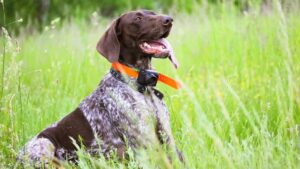When walking your furry friend, choosing the right leash is important. Dogs come in various sizes, temperaments, and energy levels, and their needs can differ. Find the ideal leash that suits your dog’s requirements to ensure a safe and enjoyable walking experience for you and your canine companion. We will explore the different types of leashes available and guide you through the considerations when selecting the perfect leash for your dog, whether it’s a leash, collar, or harness.
Understanding Leashes:
A leash is an essential tool for dog owners, allowing them to maintain control and ensure the safety of their pets during walks. Leashes come in various lengths, materials, and designs, each serving a specific purpose. Let’s delve into the different types of leashes available and their respective benefits:
- a) Standard Leash:
- The standard leash is typically six feet long and made of nylon or leather.
- It provides a good balance between control and freedom for your dog.
- Ideal for well-behaved and leash-trained dogs.
- b) Retractable Leash:
- Retractable leashes offer adjustable lengths, usually ranging from 10 to 30 feet.
- They provide your dog with more freedom to explore while still maintaining control.
- Great for dogs who have mastered basic obedience and need room to roam.
- c) Training Leash:
- Training leashes are usually longer, around 15 to 30 feet, allowing for more freedom.
- They are for teaching recall and off-leash commands in controlled environments.
- Suitable for dogs undergoing training or in open spaces away from distractions.
The Role of Collars:
Collars are commonly used with leashes to provide a secure attachment point. They come in various styles and materials, each serving a specific purpose. Here are a few types of collars and their features:
- a) Flat Collar:
- Flat collars are the most basic type, made of nylon or leather.
- They are suitable for everyday use and can hold identification tags.
- Ideal for dogs with no specific training requirements.
- b) Martingale Collar:
- Martingale collars consist of a fabric loop and a limited-slip section.
- They provide more control over dogs that tend to back out of regular collars.
- Commonly used for sighthounds or dogs with necks larger than their heads.
- c) Head Collar:
- Head collars should fit over the dog’s muzzle.
- They offer better control by redirecting the dog’s attention towards the owner.
- Suitable for dogs that tend to pull or lunge during walks.
The Benefits of Harnesses:
Harnesses have gained popularity as an alternative to traditional collars, offering additional control and comfort. Here are a few types of harnesses and their advantages:
- a) Back-Clip Harness:
- Back-clip harnesses have a ring located on the dog’s back.
- They provide better control over pulling and are easy to put on.
- Suitable for small to medium-sized dogs with good leash manners.
- b) Front-Clip Harness:
- Front-clip harnesses have a ring located on the dog’s chest.
- They discourage pulling by redirecting the dog’s attention towards the owner.
- Great for dogs that require additional control or have a tendency to pull.
- c) No-Pull Harness:
- No-pull harnesses often have both front and back attachment points.
- They provide maximum control over dogs that excessively pull on the leash.
- Ideal for strong or reactive dogs that require extra management.
Conclusion:
Finding the ideal leash, collar, or harness is crucial to ensure their safety, comfort, and peace of mind during walks. Consider your dog’s size, behaviour, and training level when choosing. Consult with professionals such as trainers or veterinarians for personalised recommendations based on your dog’s specific needs. You can enhance your walking experience and strengthen the bond between you and your furry companion by investing time and effort into selecting the right equipment.
Check out Barjeberry, and remember that a well-chosen leash can make all the difference in creating enjoyable walks for you and your dog!




